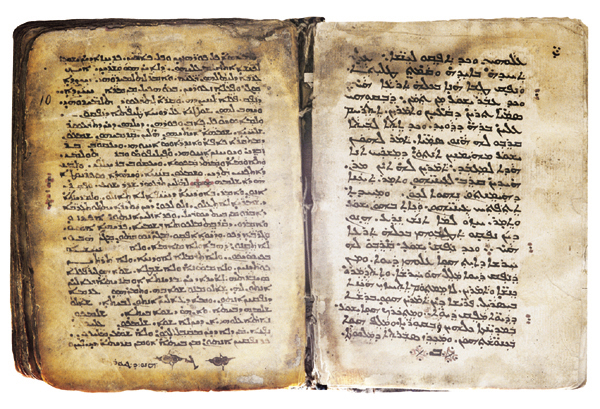Image Details

P.J. McCarthy/The Scriptorium: Center for Christian Antiquities, Grand Haven, Michigan
Written in Syriac on doe skin, the Yonan Codex contains the text of the New Testament from Matthew 9:35 through Hebrews 12:19. The missing portions of Matthew and Hebrews, copied onto paper by a different scribe, were added later. Since Syriac is written from right to left, the photo below shows the pages of Matthew where the paper addition ends (right) and the original parchment manuscript begins (left).
Most scholars believe that the Syriac New Testament, called the Peshitta, was originally copied from the Greek in the fifth century. But in the 1950s the owner of the Yonan Codex, Norman Yonan, with the support of some scholars, claimed that his Bible dated to the fourth century—earlier than any other Peshitta and contemporaneous with the oldest copies of the New Testament in Greek. This raised the possibility that the original language of the Gospels may not have been Greek but Syriac Aramaic—which, Yonan claimed, was the language spoken by Jesus.
But these claims were soon debunked—the codex dates no earlier than the seventh or sixth century, and Jesus did not speak Syriac but Palestinian Aramaic. Nevertheless, the codex continued to appeal to those who wanted to believe that it contained the actual words of Jesus in his own language. A Georgia organization transliterated the Beatitudes and sold copies for $4 apiece, assuring readers that reciting the words would cleanse and heal them. And in 1967–1968, the Georgia State Prison used this transliteration in a pilot project for the rehabilitation of sociopathic criminals. The Yonan Codex now resides, prosaically, in a research center in Grand Haven, Michigan, called the Scriptorium.
